
| LIMB is very well equipped with a range of modern and advanced instrumentation and characterisation facilities for research. Much of this equipment is very new as a result of considerable investment by Ministry of Education of China and Tianjin University in the last decade. | |
| Chromatographic Development facilities include ÄKTA Explorer 100, ÄKTA FPLC 10, ÄKTA Purifier and ÄKTA Basic systems. They are used for exploring new chromatographic techniques, developing chromatographic method and evaluating the characteristics of new adsorbents prepared in the lab. | |
ÄKTAExplorerTM 100 chromatography system is a high-efficient and convenient working platform designed for fast development of any biomolecular purification. The system can be used at flow rates up to 100 mL/min (pressure 10 MPa) so that the operation times are minimized. The system currently available in LIMB provides several special functions including method wizard, rapid media screening and column selection, method scouting and optimization. Thus the method is very easy to transfer from laboratory to production scale. |
 |
ÄKTAFPLCTM 10 chromatography is an important member of ÄKTATM design family and developed for the application in the optimized purification of biological material. In combination with UNICORNTM, ÄKTAFPLCTM meets most of demands of protein purification and provides reliable results and system versatility. FPLC includes P-920 with a flow rate up to 20 mL/min, and high-performance UPC detector. |
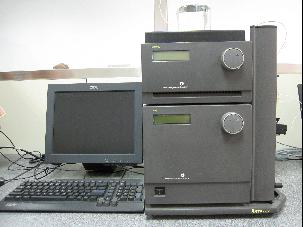 |
ÄKTAPurifierTM 10 system is designed for the purification of target proteins of interest at microgram to milligram scale depending on the parts and kits selected. The system installed in LIMB is equipped with P-900 pump, pH/C-900 and UV-900 detectors. The chromatography is versatile, fast and efficient for the purification and the results are reproducible. The UNICORN software ensures easy programming, and fast and convenient start for beginners. |
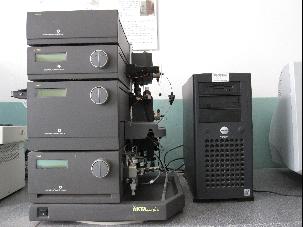 |
ÄKTAbasicTM chromatography is an automated and simplified liquid chromatography system for the research. It includes P-900 pump, UV-900 detector and pH/C-900 monitor. The core functions of the equipment contain online buffer preparation, automated sample injection and fraction collection. The chromatographic results are reproducible. |
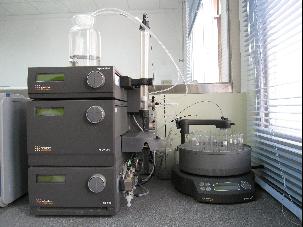 |
| Analysis and characterization of materials and bio-molecules plays an important role in the evaluation of bio-processing and the understanding of mechanism involved with bio-molecules. For example, protein concentration determined by UV-VIS spectrophotometer is an important data for the study of protein adsorption behaviour. Moreover, the researcher could obtain some information about protein conformation in the mode of spectrum screening of fluorescence spectrometer. In LIMB, HPLC equipped with versatile detectors, particle size analyser, zeta potential analyser, UV and fluorescence spectrometer, and gel imager was used for the purposes mentioned above. | |
Agilent HPLC 1100 chromatography systems are used to determination of the purity and content of protein in complex. With the help of various HPLC columns, the complex could be separated and the purity and content of target protein could be calculated by the peak area and the percent of peak area. Configured with the different detector, such as Wyatt multiple angle laser light scattering detector, refractive index detector, the molecular weight of unknown proteins and polymers could be estimated accurately. |
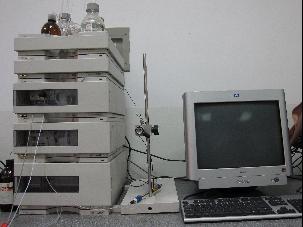 |
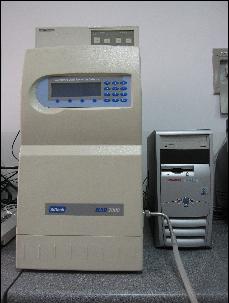 |
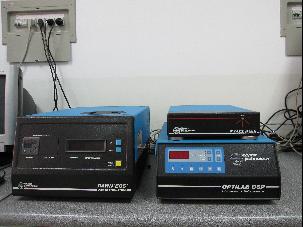 |
Agilent 6890 GC is an advanced gas chromatography system designed for volatile chemicals in samples. |
 |
Malvern Mastersizer 2000 particle size analyser used in LIMB group was purchased in 2000 for the measurement of various micro-particles, chromatographic bead and magnetic beads synthesized in the research. It is a flexible and modular system with a heliun-neon laser source. The particle size ranging from submicron to millimetres can be measured for both wet and dry samples. |
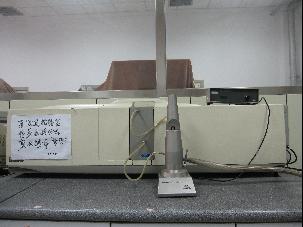 |
Malvern Zetasizer Nano-ZS analyser provides the ability to measure three characteristics of particles or molecules in a liquid medium. These three fundamental parameters are particle size, zeta potential and molecular weight. The Zetasizer system also enables determination of the protein melting point plus the ability to perform trend and auto-titration measurements. It has been designed with simplicity in mind, so that a minimal amount of user interaction is necessary to achieve excellent results. |
 |
Lambda 35 UV/VIS spectrometer from PerkinElmer Co. is installed with sealed and quartz-coated high-throughput optics. The system meets the requirements for most routine UV/VIS measurement, giving fast and reliable results in daily test. The system was operated in true double-beam mode. |
 |
LS 55 fluorescence spectrometer is developed by PerkinElmer Co. for a wide range of bioanalytical applications. The equipment is high-performance, reliability, ease-of-use, durability, and versatility. In our group, the equipment is currently used for the activity measurement of fluorescent protein and the determination of conformational change during denature. |
 |
BIOVISION 1000/26M gel imager is developed for the analysis of electrophoresis gel and further determines the content in each band. It offers exquisite precision and resolution. Very highly sensitive CCD camera with a motorized zoom is used as imaging unit in the equipment. The images captured meet the various requirements for the analysis and publication. At the same time, the advanced software, Bio-1D, simplify the all of work during the gel analysis. |
 |
P/ACE MDQ capillary electrophoresis (CE) system is designed for the method development and sample analysis. The system in LIMB is equipped with two detectors, photo diode array and selectable-wavelength UV/Vis (200, 214, 254 and 280 nm filters included) detector. All of operation and analysis are controlled by powerful 32 KaratTM Software in an IBM personal computer. It was used for the development of novel capillaries and analysis mode. |
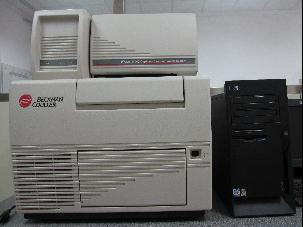 |
Labconco Freezone® benchtop freeze dryer is designed for processing aqueous samples with small volumes. The instrument installed herein is equipped with Teflon-coated collector (Catalog #7740031) and 12-port drying chamber (Catalog #7522800). It is capable of removing about 1 liter of water in 24 hour. A low-content protein and chemical in aqueous solution can be concentrated in freeze dryer prior to the analysis. |
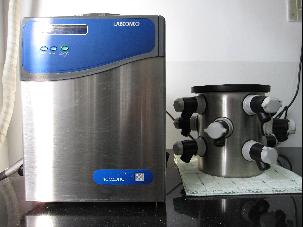 |
Swiss Tecan M200 PRO ELIASA has excellent detection sensitivity. It has advanced light source – Xenon flash lamp. Its grating wavelength covers from the ultraviolet region, visible region to infrared region. The equipment is simple and convenient to operate, no preheating required. It can change the detection mode and wavelength at will. In our lab, ELIASA is currently used for the detection of protein growth dynamics or single point fluorescence. |
 |
| Advanced facilities have recently been installed in our group to study the thermodynamic and kinetic behaviour involved with bio-molecules such as protein adsorption, protein uptake in chromatography and protein denaturation. These facilities include VP-ITC calorimeter, confocal laser scanning microscopy and stopped-flow spectrometer. | |
VP-ITC isotherm titration calorimeter developed by Microcal Co. is now part of GE Healthcare. It is used for the measurement of thermodynamic parameters during biomolecular interactions. These parameters to be determined include binding constant (K), binding stoichiometry (N), enthalpy (ΔH), entropy (ΔS), and Gibbs free energy (ΔG) through one typical experiment by detecting the heat changes of the reaction. And heat capacity (ΔCp) can also be determined by a group of ΔH values at different temperatures. It contains a micro-cell made of non-reactive Hastelloy materials with a volume of 1.4 mL. |
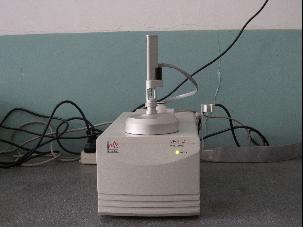 |
Confocal laser scanning microscopy is a powerful tool for the detection of molecules both in the solution and in gels. Recently, we installed a Radiance 2000 Laser Scanning System (BioRAD). The light sources are provided by a 10mW He-Ne laser with a wavelength of 637 nm and a 15mW Kr-Ar laser with wavelengths of 488 nm and 568 nm. The system was coupled with inverted Nikon ECLIPSE EL-2000U microscopy to investigate the motion of fluorescence labelled macromolecules (e.g. plasmid DNA, proteins and polymers) in gels or solution. With the helps of Laserpix 2000 software, 3D imaging of single matrix can be reconstructed and the dynamics and interaction of macromolecules in single matrix are showed. |
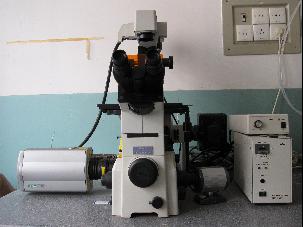 |
SX20 stopped-flow spectrometer is used to study transient and pre-steady-state kinetics of fast interactions initiated by the rapid mixing and stopping (stopped-flow) of the reactants. Then UV spectroscopic monitor is employed to follow the course of the reaction by recording changes in the amplitude of the spectroscopic signal as a function of time. As described on website of the manufacturer, the upper limit to the reaction rates that can be measured with stopped-flow is ~2000s-1. The stopped-flow spectroscopy had been applied in many academic fields, such as enzyme catalysis, protein refolding, and ligand or drug binding to bio-molecules. |
  |
Quartz Crystal Microbalance with Dissipation(QCM-D) is a new technology of quartz crystal micro balances (QCM) developed by Biolin Scientific. It can detect the adsorbent on the quartz crystal surface and realize real-time investigation on the surface-molecules interactions. Based on the dissipation, the instrument can measure mass and thickness changes and rapid events with nanogram precision. It also detects structural changes and solvent content. It can be used in a full range of molecular adsorption and desorption, cross-linking and aggregation, thin film swelling, dissolution and corrosion. |
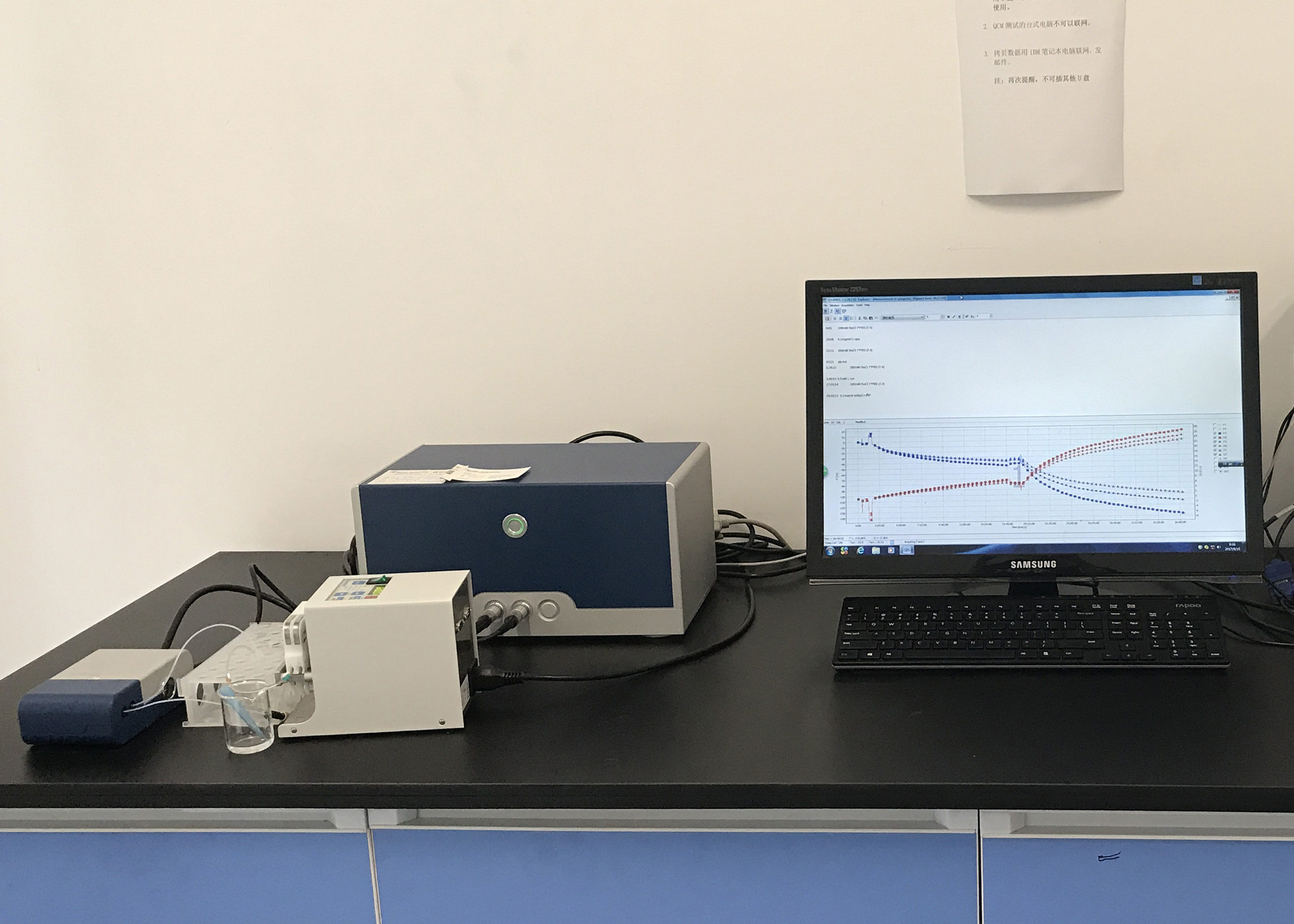 |
CSPM5500 Atomic force microscopy (AFM) from Benyuan Co. Ltd. was employed to examine the morphologies of samples with high precision. It can be operated in the contact or tapping mode with an image resolution up to 4096 × 4096 pixel. The micron grade scanning can get the actual information on nanoscale. It has real-time 3D image display function, which is convenient for the user to obtain sample information intuitively at any time during the process. |
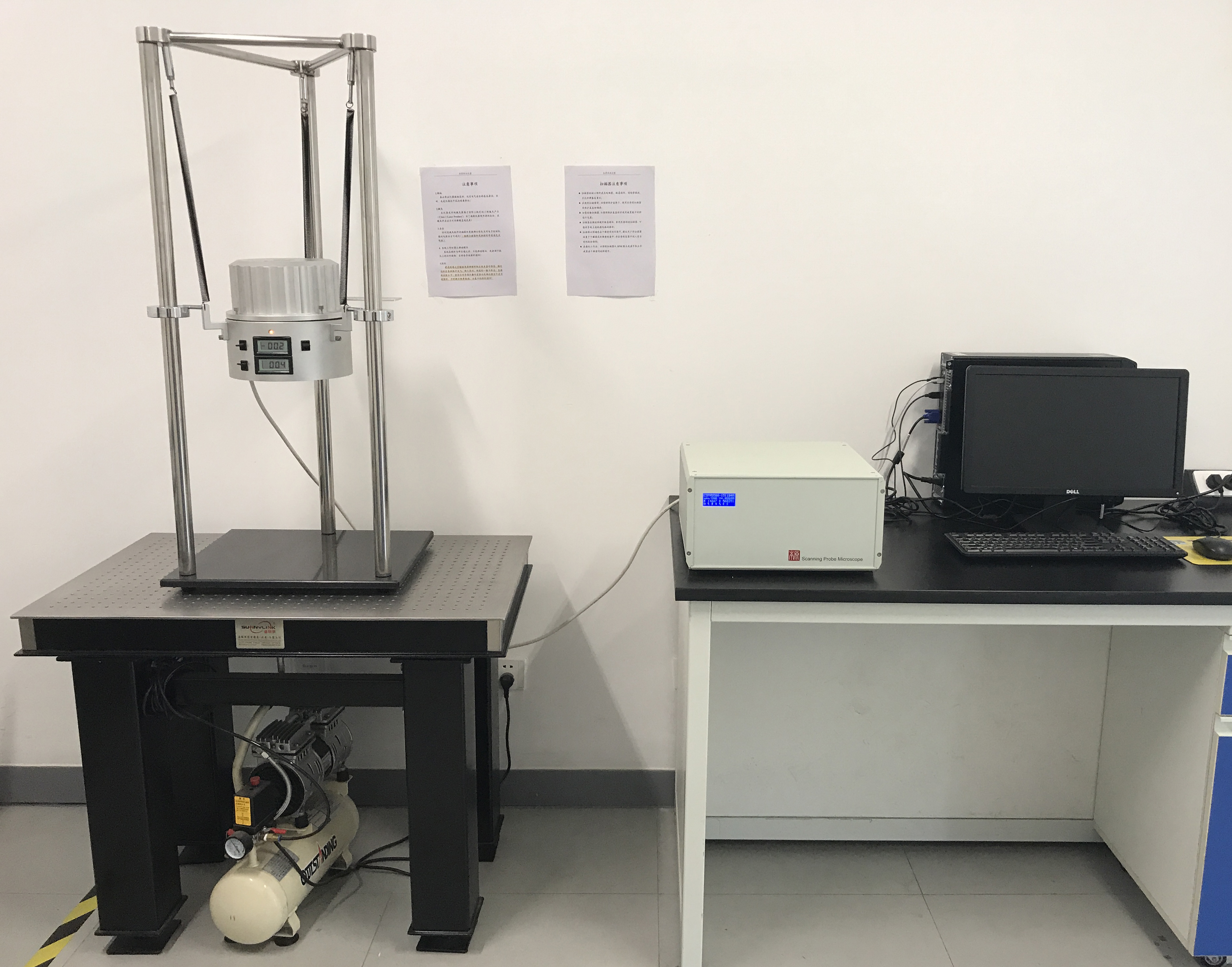 |
| High Performance Cluster | |
Molecular dynamics (MD) simulations are performed on a Dawning cluster running on LINUX platform, which contains 34 Dual-Core AMD Opteron processors and 40 Quad-Core AMD Opteron processors. On the software side, MD packages including GROMACS, CHARMM, NAMD are used to explore at the molecular level various properties of bimolecules involving in phenomena, like the conformational changes of proteins in folding or aggregation, interfacial behaviors of proteins in chromatography, etc. Additionally, VMD is utilized for visualization and MD modeling, in which some other packages like Marvin, Sybyl, etc are also used. |
 |
| Cell Culture Room | |
LIMB group has a fully equipped room dedicated to cell culture. The cell culture room includes CO2 incubator (Thermo Fisher Scientific), class II biosafety cabinet, benchtop centrifuge, laboratory refrigerator and fluorescence microscope. These devices can be used for the examination on cellular viability related to amyloid protein aggregation. |
 |
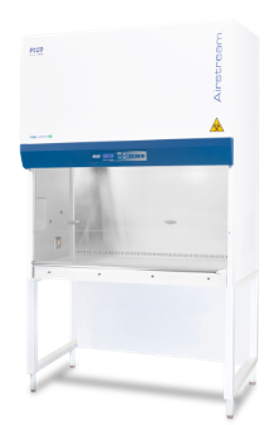  |
  |
